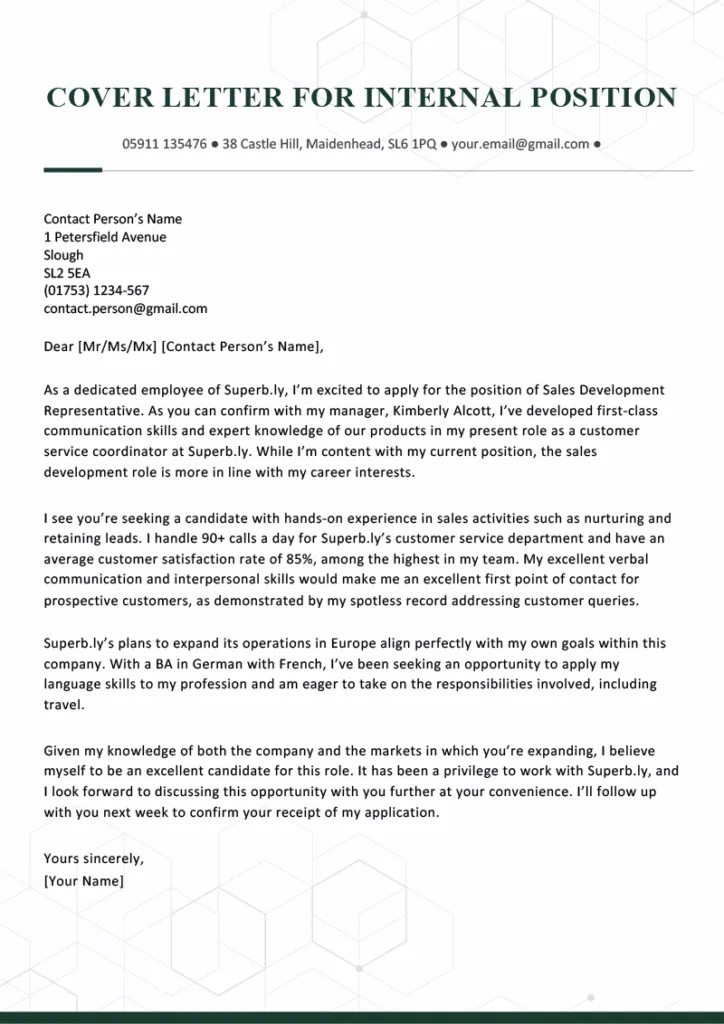What is an Internal Cover Letter
An internal cover letter is a crucial document for any employee seeking a new role within their current company. Unlike external cover letters, which are often more formal, internal cover letters provide a unique opportunity to highlight your existing relationship with the company and showcase your familiarity with its culture and values. They are a direct communication tool, specifically tailored to address hiring managers and decision-makers within the organization you already know. This letter emphasizes your internal career goals and provides a clear and concise overview of your qualifications, making it easier for the hiring team to assess your suitability for the desired position.
Why Write an Internal Cover Letter
Writing an internal cover letter is a strategic move that can significantly enhance your chances of landing your desired role. Firstly, it demonstrates genuine enthusiasm and initiative. It signals to the hiring manager that you are proactive and dedicated to furthering your career within the company. Secondly, an internal cover letter allows you to articulate why you are the best fit for the role, drawing from your deep understanding of the company and its values. Furthermore, it gives you the space to personalize your application, tailoring your skills and experiences to the specific requirements of the position. It is also a perfect way to highlight your achievements in the company, showing your contribution and value.
Highlighting Your Skills and Experience
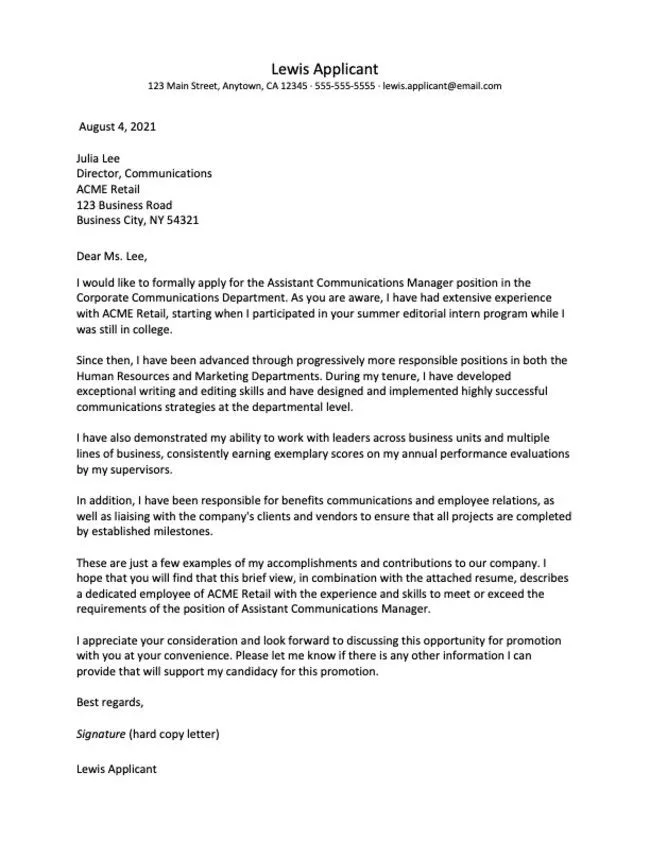
When highlighting your skills and experience in an internal cover letter, it’s crucial to focus on relevance and impact. Start by carefully reviewing the job description and identifying the key skills and qualifications the company is looking for. Then, provide specific examples from your current or previous roles within the company that demonstrate how you have utilized these skills effectively. This might include project management, communication, problem-solving, or leadership abilities. Quantify your achievements whenever possible, using metrics to show the tangible results you have delivered. For example, describe how you improved efficiency, increased sales, or reduced costs. Ensure your examples are current and relevant to the position you are applying for, and clearly explain how these experiences align with the job requirements.
Showcasing Company Achievements
Besides showcasing your individual achievements, it is vital to demonstrate your understanding and appreciation for the company’s overall mission and accomplishments. In your internal cover letter, briefly mention the company’s recent successes and relate them to your own contributions, highlighting how your work has supported these achievements. Show that you are aware of the company’s goals and values, and articulate how your skills and experiences can further contribute to its ongoing success. This not only shows your commitment to the company but also positions you as a forward-thinking employee who is invested in its future. Mentioning company-wide initiatives or projects you have been involved in can also show your teamwork skills and understanding of the company’s structure and goals.
Structuring Your Internal Cover Letter
A well-structured internal cover letter is key to making a strong impression. It should be concise, well-organized, and easy to read. Use clear headings and formatting to break up the text and make it visually appealing. The structure should include an introduction, body paragraphs, and a conclusion. The introduction should state the position you are applying for and how you learned about the opportunity. The body paragraphs should highlight your relevant skills, experience, and accomplishments, providing specific examples to support your claims. Finally, the conclusion should express your enthusiasm for the position and reiterate your interest. Ensure your language is professional, and your tone is confident but not arrogant, and always proofread your letter carefully for any errors in grammar and spelling.
Header and Salutation
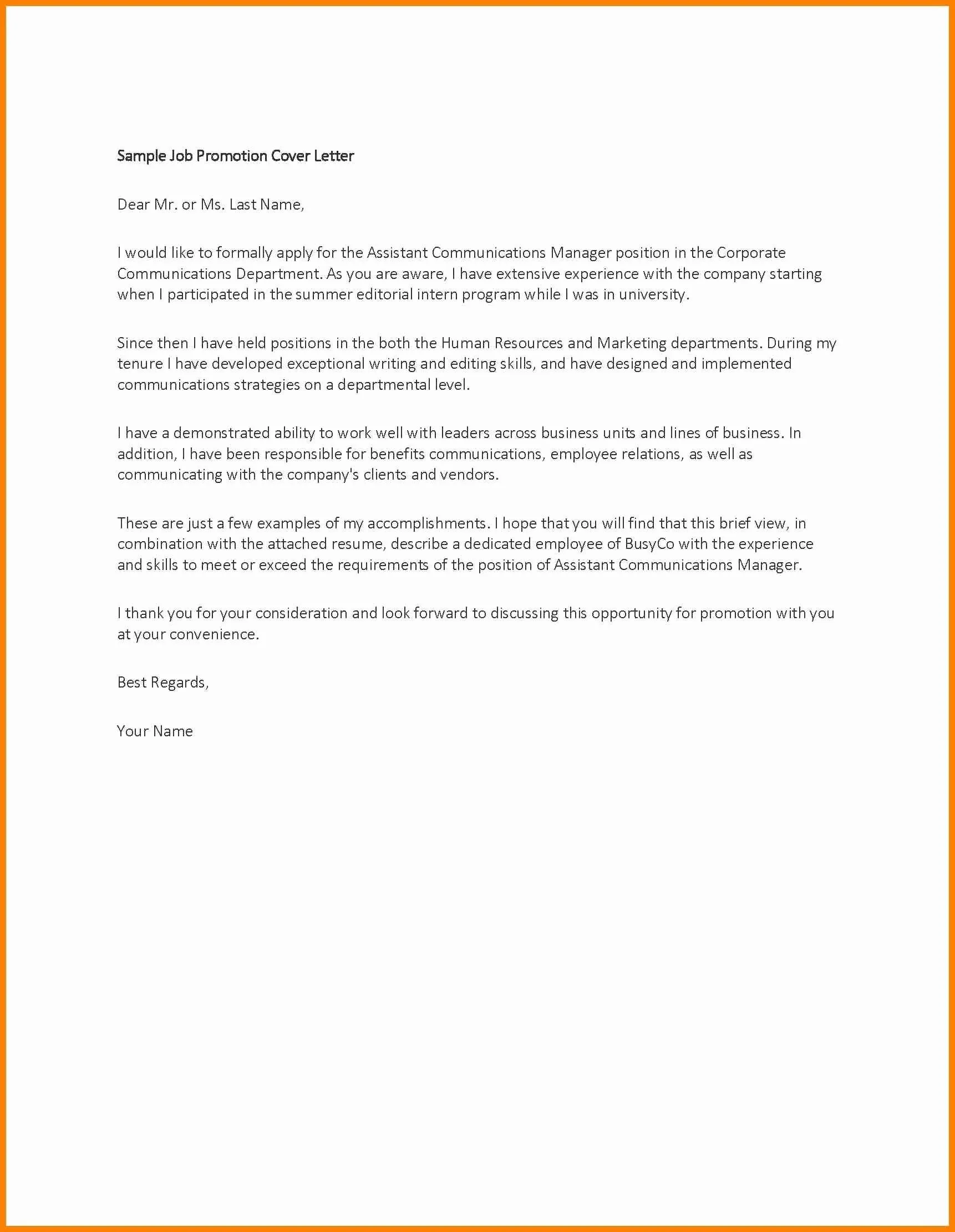
Start your internal cover letter with a professional header that includes your contact information, the date, and the hiring manager’s name and title, if known. Addressing your letter to a specific person demonstrates that you have researched the role and are genuinely interested in the opportunity. Use a formal salutation, such as “Dear Mr./Ms. [Last Name],” or “Dear Hiring Manager,” if you are unsure of the recipient’s name. If you have a professional relationship with the hiring manager, consider using a more casual greeting, such as “Dear [First Name].” Ensure the header and salutation align with the company’s communication standards, to present the best first impression. A personalized salutation adds a touch of warmth and professionalism.
Opening Paragraph Making a Strong First Impression
The opening paragraph sets the tone for your entire letter, so it’s essential to make a strong first impression. Begin by clearly stating the position you are applying for and how you learned about the opening – whether through an internal job posting, a colleague, or a company newsletter. Express your enthusiasm for the role and the company, showcasing your genuine interest. Briefly mention your current position within the company and a brief overview of your relevant skills and experience. Make sure to include a sentence or two that highlights what motivates you and what value you are bringing to the table. Keep the introduction concise and engaging, and make it easy for the reader to understand why you are a suitable candidate. Keep in mind that this first impression is your chance to hook the reader.
Body Paragraphs Focusing on Relevant Skills
The body paragraphs are the core of your internal cover letter, where you highlight your relevant skills and experience. Each paragraph should focus on a specific skill or accomplishment, providing concrete examples to support your claims. Use the STAR method (Situation, Task, Action, Result) to structure your examples, clearly outlining the context, your responsibilities, the actions you took, and the positive outcomes you achieved. Tailor your examples to align with the requirements of the job description. This approach ensures you are highlighting the most pertinent aspects of your professional background. Prioritize the skills that directly match the job’s requirements, and provide evidence of how you have successfully applied those skills in your previous roles within the company.
Quantifying Achievements
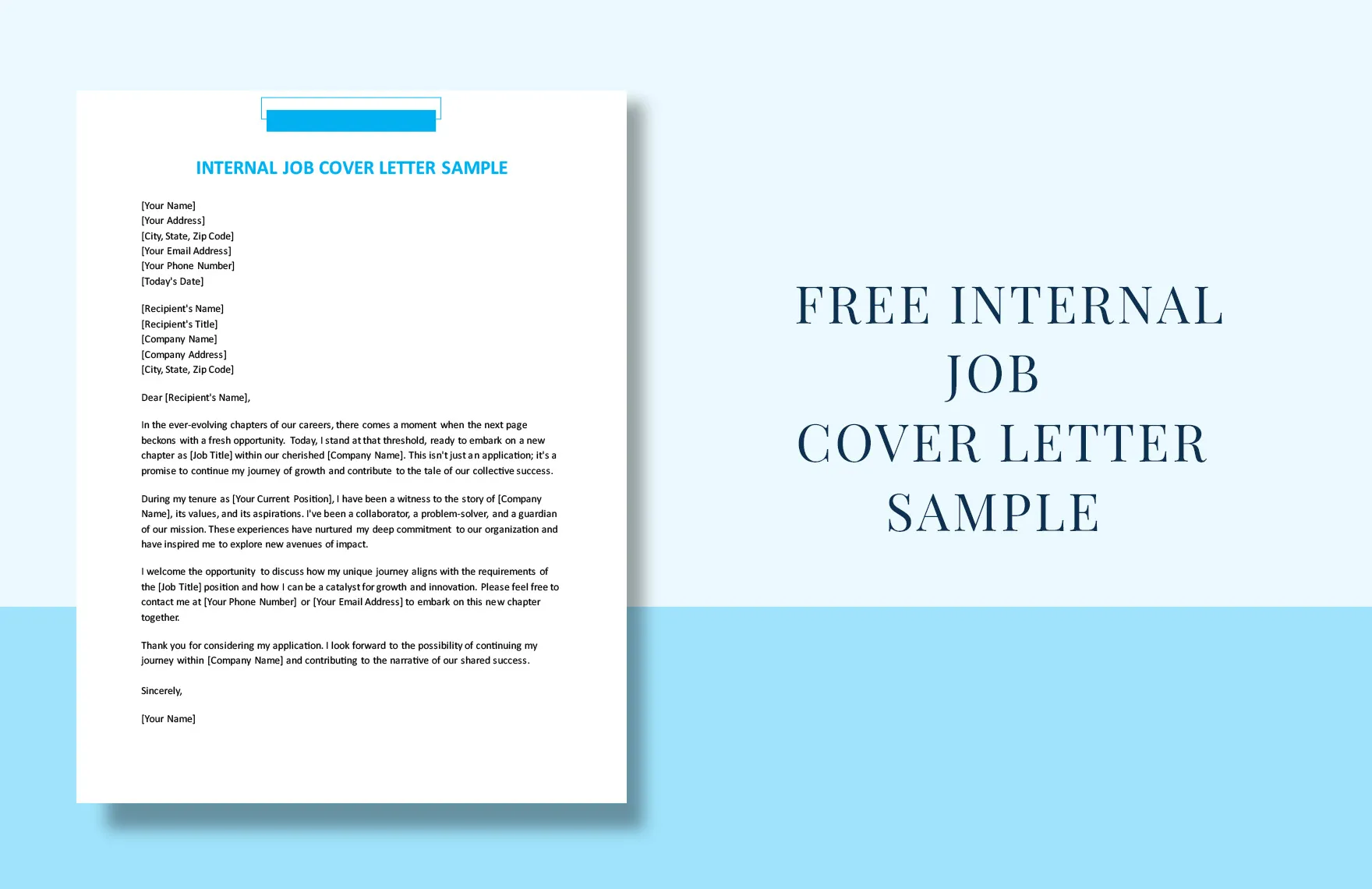
Quantifying your achievements makes your cover letter more impactful and demonstrates your value. Use specific metrics and data to illustrate your successes. For instance, instead of stating, “Improved customer satisfaction,” write, “Increased customer satisfaction scores by 15% through the implementation of a new feedback system.” Quantifying your achievements makes them more tangible and credible, providing concrete evidence of your capabilities. Use numbers and percentages to show the scope of your accomplishments, whether it is sales growth, cost reduction, or increased efficiency. When possible, compare your results to previous periods or industry benchmarks to showcase the impact of your contributions. This quantitative approach ensures your achievements are clear and measurable.
Tailoring Your Letter to the Role
Tailoring your internal cover letter to the specific role is essential to demonstrate your genuine interest and suitability for the position. Avoid using a generic template. Instead, carefully review the job description and identify the key skills, qualifications, and experiences the company seeks. Customize your letter to address these specific requirements. Highlight how your skills align with the job’s demands and provide examples of how you have successfully used those skills in the past. Show that you understand the role and the challenges it involves. Mention any company-specific projects, initiatives, or values that resonate with you. This demonstrates your dedication to the company and your understanding of the role’s expectations.
Closing Expressing Enthusiasm and Next Steps
The closing of your internal cover letter should reiterate your enthusiasm for the position and clearly state your next steps. Express your appreciation for the opportunity and your interest in discussing your qualifications further. Reiterate your interest in the role and summarize your key qualifications, reinforcing your suitability for the position. If possible, mention your availability for an interview and express your willingness to provide additional information. Conclude with a professional closing, such as “Sincerely” or “Best regards,” followed by your name and contact information. Make it clear that you are ready to discuss your application and move forward with the hiring process.
Internal Cover Letter Examples
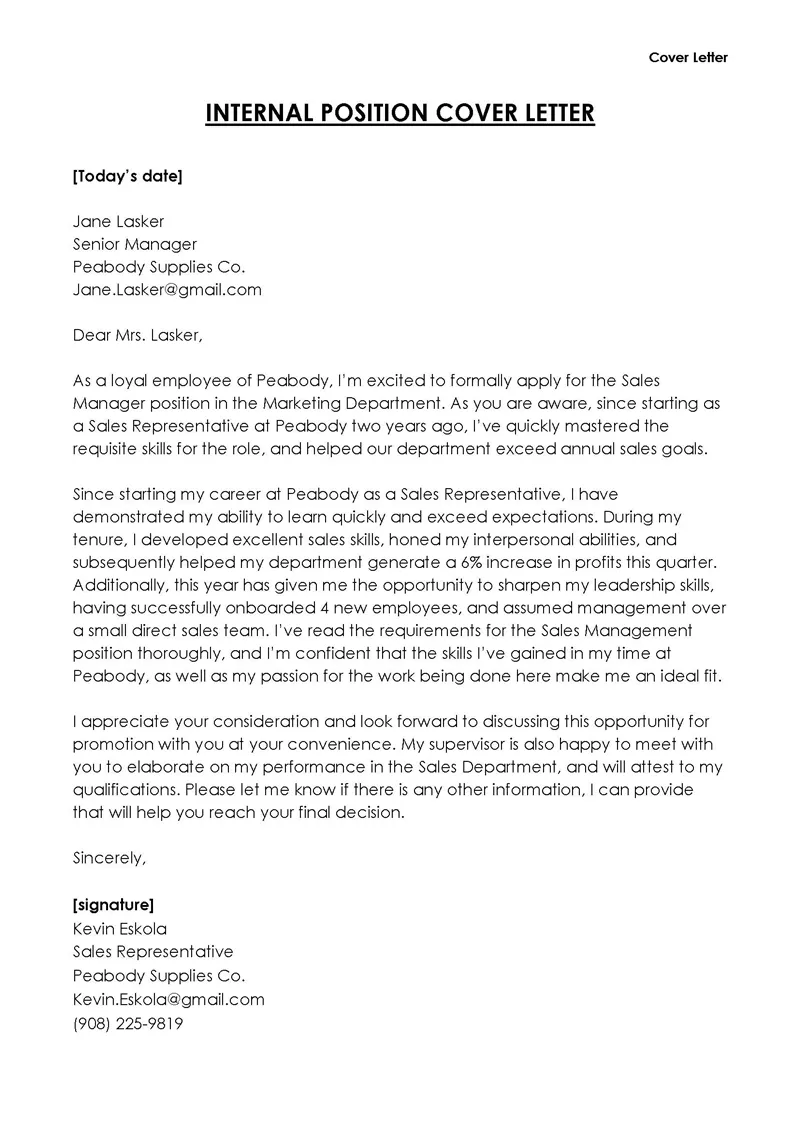
Reviewing internal cover letter examples can provide valuable insights and inspiration when writing your own letter. These examples can guide you in structuring your letter, highlighting relevant skills, and showcasing achievements. While each letter should be personalized to reflect your specific situation and the job you are applying for, these samples offer a useful starting point. Tailor the examples to your unique experiences and adapt the language and content to reflect your personality. Remember to change the information, such as company names, positions, and achievements, to accurately represent your background. Using these examples can greatly help you understand the format and tone, giving you a clear reference.
Example 1 Promotion within the Same Department
This type of internal cover letter is written by an employee who is seeking a promotion within the same department. It emphasizes the employee’s current contributions, skills, and how the new role aligns with their career goals. The focus is on highlighting the achievements that are relevant to the requirements of the new role. The letter should also express enthusiasm for the new responsibilities and a commitment to the team and company goals. The language should be confident but not arrogant, and the tone should remain professional throughout. Make sure to emphasize how your past successes will translate into future success in the promoted role.
Example 2 Transfer to a New Department
This type of internal cover letter is written by an employee seeking a transfer to a new department within the company. The letter focuses on how your skills and experience are transferable to the new role. It is crucial to highlight the skills and experiences that align with the new position’s requirements. Explain how you gained these skills. Express your enthusiasm for the opportunity to learn new things and contribute to a different part of the company. It is important to showcase your adaptability, willingness to learn, and a strong understanding of the company’s values. The letter should also highlight your commitment to the organization and express your excitement about contributing to the new department’s success.
Example 3 Applying for a Leadership Position
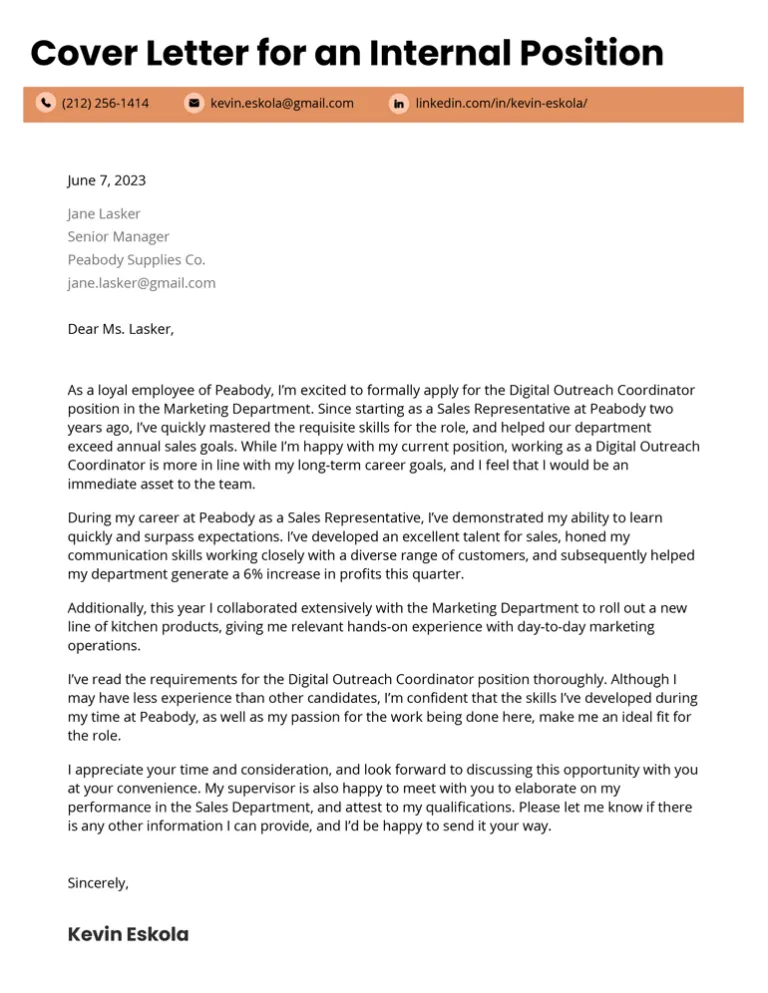
This type of internal cover letter is written by an employee applying for a leadership position. It focuses on demonstrating leadership skills, experience, and achievements. This letter is an opportunity to present your leadership qualities and how you can inspire and motivate others. Highlight your leadership style and management capabilities. Show that you have a vision for the team or department and how you will contribute to its success. It is important to provide specific examples of your leadership skills. If possible, showcase instances where you have led teams, managed projects, or mentored colleagues. Express your ability to create a positive work environment and your commitment to employee development and team building.
Additional Tips for Success
Besides the essential elements, there are additional tips to enhance the impact of your internal cover letter. Remember to keep your letter concise, typically no more than one page. Use clear and concise language, and avoid jargon. Maintain a positive and enthusiastic tone. The letter should showcase your personality and make you appear relatable. Always tailor your letter to each specific job. Proofread and edit your letter carefully for any grammar or spelling mistakes. Present your letter in a professional format, with proper headings, spacing, and fonts. A well-formatted and error-free letter shows attention to detail and professionalism. These tips can significantly increase your chances of creating a successful application.
Proofreading and Editing
Proofreading and editing are critical steps in the internal cover letter writing process. Before submitting your letter, carefully review it for any grammatical errors, spelling mistakes, or typos. Ensure that your sentences are clear, concise, and easy to understand. Check the formatting, including the spacing, font, and alignment. Consider using a grammar and spell-check tool, but do not solely rely on these tools. Read your letter aloud to identify any awkward phrasing or sentences. Ideally, ask a colleague or friend to review your letter for an objective perspective. Their feedback can help identify any areas that need improvement. Proper proofreading can significantly enhance your credibility and show your attention to detail.
Seeking Feedback
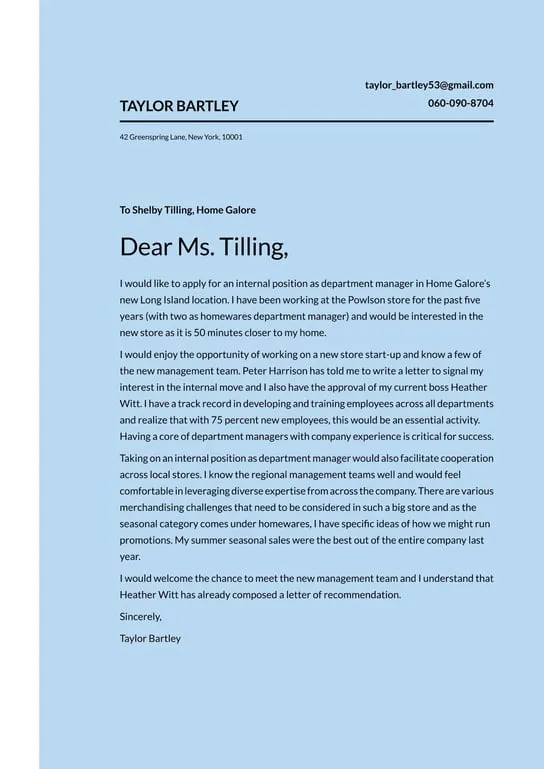
Seeking feedback from trusted colleagues, mentors, or career advisors is highly recommended. Ask for constructive criticism on your letter’s content, clarity, and overall impact. Share your draft with a colleague who is familiar with internal cover letter writing or who has previously applied for similar roles. Seek their opinion on whether your letter is convincing and if it effectively highlights your skills and experience. Take their advice into account and revise your letter accordingly. Receiving feedback helps you see your cover letter from different perspectives, and enables you to make your letter the best possible. Make sure to use the feedback constructively, to make a letter that effectively showcases your qualifications.
Following Up
Following up on your internal cover letter demonstrates your continued interest in the role and your professionalism. After submitting your application, wait a reasonable time, usually a week or two, before sending a follow-up email. In your follow-up email, reiterate your interest in the position and express your appreciation for the opportunity. Briefly summarize your key qualifications and mention the specific aspects of the job that excite you the most. Keep the email concise and professional, and thank the hiring manager for their time and consideration. If the hiring manager has a timeline for the selection process, mention that you are available to answer any questions they may have. Following up displays your initiative and commitment to the opportunity.
